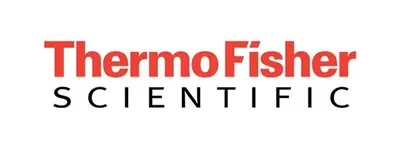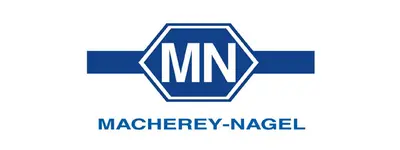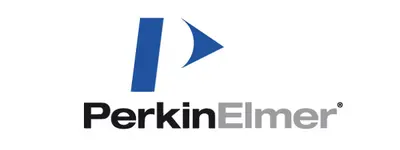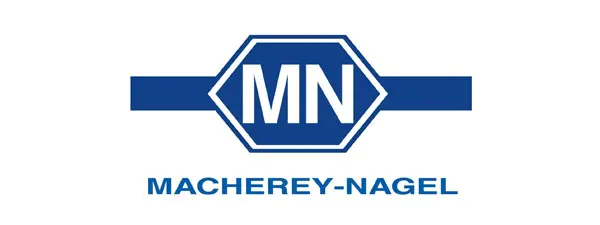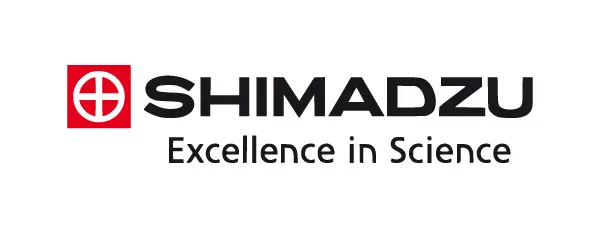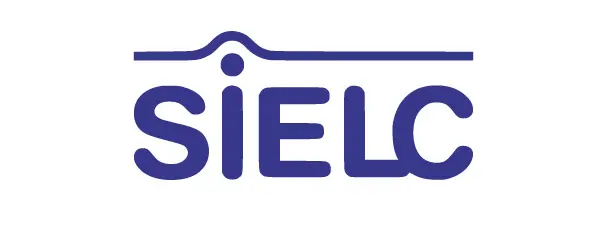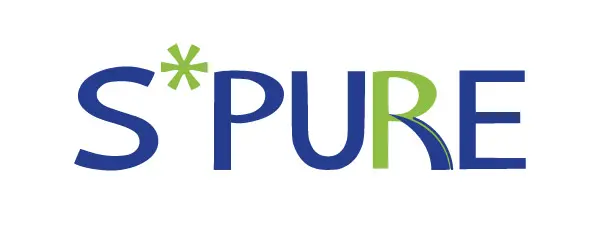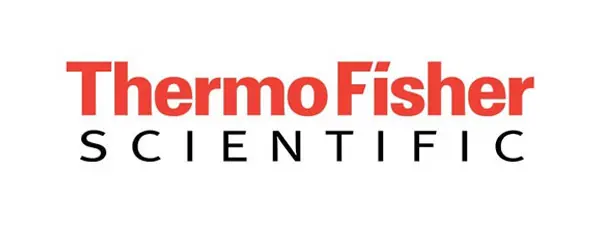- 3% Discount on online orders
- Fast Delivery Times
- DIN ISO 9001:2015 Certified
- Manufacturer Expertise
- Contact Us
Checkout using your account
Checkout as a new customer
Creating an account has many benefits:
- See order and shipping status
- Track order history
- Check out faster
PFAS
PFAS is the abbreviation for per- and polyfluoroalkyl substances. These are industrial chemicals and can be found in many industrial products such as paper, textiles and cosmetics. PFAS are difficult to break down and can be detected in the environment, the food chain and in human blood. PFAS are suspected of causing cancer.
In September 2023, the European Chemicals Agency (ECHA) published several limit values for PFAS and products containing PFAS. The United States Environmental Protection Agency (EPA) also introduced a new method (EPA Method 1633) for determining PFAS in various matrices in January 2024. In addition, six PFAS were regulated by the EPA in drinking water in April 2024, which even introduced a limit of zero for PFOA and PFOS. Based on these developments, it is becoming increasingly important to detect PFAS in different matrices and to lower the detection limits.
On this page you will find a general workflow for PFAS analysis, all related products for chromatography, many brochures and some applications.

Figure 1: General structure of PFAS.
Products
Technical Data
PFAS Workflow
PFAS are mainly analysed in samples with a complex matrix such as various water samples (waste water, drinking water), soil samples or air samples. Due to these complex matrices in water and soil samples, it is essential to prepare the sample using SPE. Depending on the target group of the PFAS, different methods can be used. The procedure for sample preparation and usually also the analysis is described using prescribed methods such as EPA Method 1633, 533, 537.1 or ISO 21675:2019. The various methods are aimed at different PFAS. The most comprehensive method is currently EPA Method 1633, which can be used to analyse most PFAS.
Air sampler
For samples from the air, the PFAS must first be collected from the air. An air sampler such as the PFAS FM4 from GL Sciences can be used for this purpose. With the help of a pump, air is sucked through various filter media, which specifically collect ionic and neutral/volatile PFAS. The PFAS can then be eluted using organic solvents and analysed using chromatography.
Chromatography
Sample preparation is followed by analysis, which can be carried out using LC or GC. The PFAS to be analysed again play a decisive role in the selection of the appropriate method. Neutral and volatile PFAS can be analysed by GC. However, charged PFAS in particular are not detected, which is why LC is the preferred method for analysing both neutral and charged PFAS.
PFAS delay column
As PFAS are polyfluorinated compounds, it is important to ensure that no additional polyfluorinated impurities are introduced into the system. This can be the case, for example, when using PTFE (polytetrafluoroethylene, Teflon) or other polymers. As this cannot be completely avoided, especially within the HPLC system, so-called delay columns are used to keep the polyfluorinated compounds out of the system so that the sample can be analysed cleanly.
Reversed phase chromatography
Due to its good water solubility and yet hydrophobic properties, reverse phase chromatography is ideal for analysing PFAS. By using special columns, which can also be used in 100% aqueous solutions, up to 40 PFAS can be separated in one run.
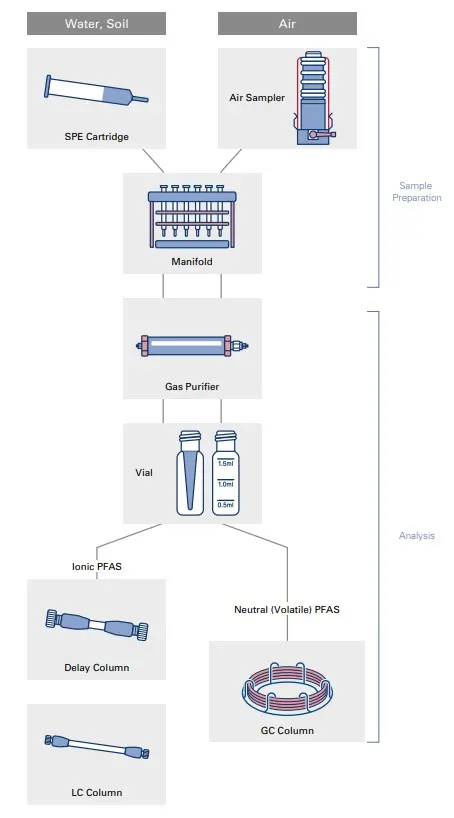
Applications
EPA Method 1633
EPA method 1633 covers 40 different PFAS. Aqueous, soil and tissue samples can be analysed using the same LC method. Only the sample preparation differs.
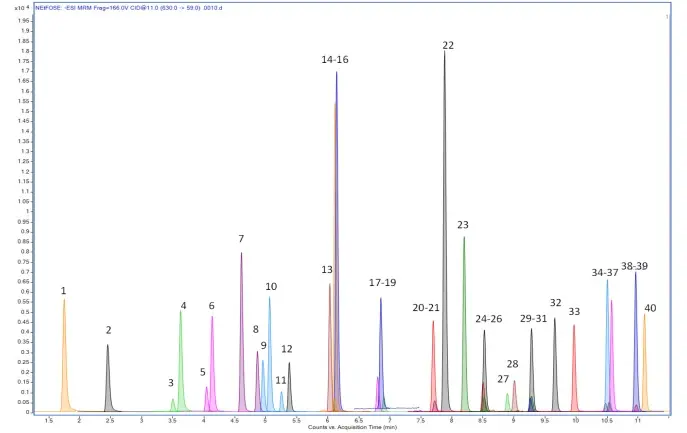
Peak Identities
1. PFBA 2. PFMPA 3. 3-3 FTCA 4. PFPeA 5. PFBS 6. PFMBA 7. PFEESA 8. NFDHA 9. 4-2FTS 10. PFHxA 11. PFPeS 12. HFPO-DA 13. PFHpA 14. PFHxS 15. 5-3 FTCA 16. ADONA 17. 6-2FTS 18. PFOA 19. PFHpS 20. PFNA 21. PFOS 22. 7-3 FTCA 23. 9Cl-PF3ONS 24. 8-2FTS 25. PFDA 26. PFNS 27. NMeFOSAA 28. PFOSA 29. PFDS 30. PFUnA 31. NEtFOSAA 32. 11Cl-PF3OUdS 33. PFDoA 34. NMeFOSA 35. NMEFOSE 36. PFDoS 37. PFTrA 38. NEtFOSE 39. NEtFOSA 40. PFTeDA
Chromatography Columns
Column: HALO PFAS, 100x2.1mm, 2.7µm (92812-613)
Delay Column: HALO PFAS Delay, 50x3.0mm, 2.7µm (92113-415)
Test Conditions
Mobile Phase A: 20mM Ammonium acetate
Mobile Phase B: Methanol
Gradient:
Time / min | %B |
0.0 | 20 |
12 | 90 |
15 | 90 |
15.1 | 20 |
18 | 20 |
Flow rate: 0.4mL/min
Back pressure: 505bar
Temperature: 44°C
Detection: ESI MS/MS (negative mode)
Injection volume: 2.0µL
Sample solvent: Methanol/Water (96/4)
MS System: Agilent 6400 series
LC System: Agilent 1200 series

Downloads
The manufacturers GL Sciences, UCT, Restek, ThermoScientific, Waters and PerkinElmer have published comprehensive guides for the determination of PFAS, from sample preparation to analysis. In addition to columns for analysis, SPE cartridges, QuEChERS and other accessories for the PFAS workflow can also be found here.
-
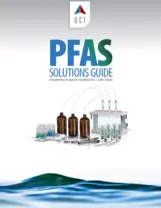 UCT PFAS Solution Guide 2024
UCT PFAS Solution Guide 2024
-
 GL Sciences PFAS Testing Solution Guide Brochure
GL Sciences PFAS Testing Solution Guide Brochure
-
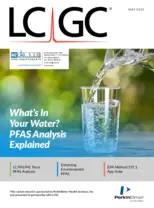 PerkinElmer LCGC What's in Your Water? ebook
PerkinElmer LCGC What's in Your Water? ebook
-
 Restek Product Guide for PFAS Analysis Brochure
Restek Product Guide for PFAS Analysis Brochure
-
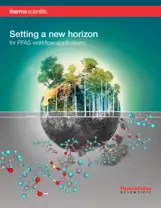 Thermo PFAS Workflow
Thermo PFAS Workflow
-
 Waters Startup Guide for PFAS Analysis Brochure
Waters Startup Guide for PFAS Analysis Brochure
-
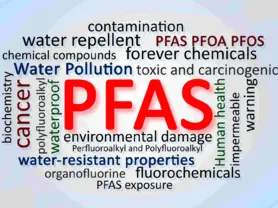 S*Pure PFAS Products Brochure
S*Pure PFAS Products Brochure
-
 AMT HALO Enviroclass - HALO-PFAS Environmental Analysis
AMT HALO Enviroclass - HALO-PFAS Environmental Analysis
-
 AMT HALO Introducing HALO PFAS Column Solutions
AMT HALO Introducing HALO PFAS Column Solutions
-
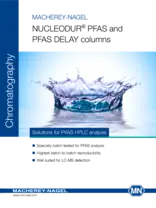 Macherey-Nagel NUCLEODUR PFAS and PFAS DELAY Brochure
Macherey-Nagel NUCLEODUR PFAS and PFAS DELAY Brochure
-
 AMT HALO Introducing HALO PFAS Column Solutions
AMT HALO Introducing HALO PFAS Column Solutions
-
 AMT HALO Enviroclass - HALO-PFAS Environmental Analysis
AMT HALO Enviroclass - HALO-PFAS Environmental Analysis
Manufacturer overview
AMT-HALO®
HPLC - Reserved Phase:
- HALO PFAS (EPA 533, 537.1, 1633, 8327)
Properties:
- Safe to use due to method-qualified batch analysis
- End-capped alkyl phases for highly sensitive LCMS analyses
- Optimised 2.7 µm Fused-Core® particles for robust, reliable performance and highly efficient separations with low backpressure
- AMT-HALO® Analysis of PFAS in Well Water Spiked with Standards
- AMT-HALO® Demonstration of the HALO® PFAS Delay Column
- AMT-HALO® PFAS Analysis According to EPA 533
- AMT-HALO® PFAS Analysis According to EPA 537.1 Using HALO® 90 Å C18, 2.0 μm
- AMT-HALO® PFAS Analysis According to EPA 537.1
- AMT-HALO® PFAS Analysis According to EPA 8327
- AMT-HALO® Rapid Analysis of 33 PFAS Compounds in Under 5 Minutes
- AMT-HALO® Rapid PFAS Analysis According to EPA 537.1 using HALO® 90 Å Phenyl-Hexyl, 2.7 μm Peak
- AMT HALO PFAS EPA Method 1633 for PFAS
GL Sciences
Sample preparation:
- Air Sampler
- InertSep PLS-2 (EPA 537.1)
- InertSep WAX, MA-2 (EPA 533)
HPLC:
- PFAS Delay Column
InertSustain AQ-C18
GC:
- InertCap Pure-WAX (Air Sampling)
- Macherey-Nagel Analysis of PFAS in Aqueous Samples according to EPA Method 533 on Nucleodur PFAS 3µm
- Macherey-Nagel PFAS Analysis according to EPA Method 533 on Nucleodur PFAS 3µm
- Macherey-Nagel PFAS Analysis according to EPA Method 533 and 537.1 on Nucleodur PFAS 3µm
- Macherey-Nagel PFAS Analysis according to EPA Method 537.1 on Nucleodur PFAS 3µm
- Macherey-Nagel PFAS Analysis according to ISO 21675:2019 and DIN 38407-42 on Nucleodur PFAS 3µm
- Macherey-Nagel PFAS Analysis in Water Matrices according to EPA Method 8327 on Nucleodur PFAS 3µm
- Macherey-Nagel Determination of PFAS from Food according to FDA Method C-010.02 on Nucleodur PFAS 3µm
- Macherey-Nagel Analysis of PFAS in Aqueous Samples according to EPA Draft Method 1633 on Nucleodur PFAS 3µm
Merck Supelco (Sigma-Aldrich)
Sample preparation:
- Supelclean ENVI-WAX (EPA 533)
HPLC - Reversed Phase:
- Ascentis Express PFAS 2.7µm
- Ascentis Express PFAS Delay 2.7µm
- Restek EPA 8327 PFAS on Raptor C18
- Restek EPA Method 537.1 on Raptor C18
- Restek Laboratory Fortified Blank (LFB) at Midrange (40 ppt) for EPA 537.1 on Raptor C18
- Restek Perfluorinated Alkyl Acids on Raptor C18 by LC-MS/MS for EPA Method 537
- Restek Perfluorinated Compounds (PFCs) on Raptor C18 (1.8 μm)
- Restek Perfluorinated Compounds (PFCs) on Raptor C18 (1.8 μm)
- Restek PFAS on Force C18 by Direct Injection (EPA Method 8327)
- Restek PFAS by Direct Injection on Force C18 (3 μm) (EPA Method 8327)
- Restek Perfluorooctanoic Acid (PFOA) & Perfluorooctanesulfonic Acid (PFOS) on Raptor C18 by LC-MS/MS
- Restek Perfluorinated Alkyl Acids (PFBS, PFOA, PFOS and HFPO-DA/GenX) on Raptor C18 5μm
- Restek Ultra-short Chain, Legacy, and Alternative PFAS on Raptor C18 in Reagent Water
- Restek PFAS-Analyse Ultrakurzkettige (C2, C3), alternative und traditionelle Verbindungen
Shimadzu
HPLC - Reversed Phase:
- Shim-pack Velox SP-C18 2.7µm
- Shim-pack XR-ODS II 2.2µm
UHPLC - Reversed Phase:
- Shim-pack GIST C18 2µm
SIELC
HPLC - Ion Exchange:
- Newcrom A 5µm
Shodex
HPLC - HILIC:
- HILICpak VT-50 2D 5µm
Thermo Fisher
HPLC - Reversed Phase:
- Hypersil GOLD aQ 3µm (EPA 537)
- Accucore RP-MS 2.6µm (EPA 1633, 533, 537, 8327)
- Hypersil BDS C18 5µm
UHPLC - Reversed Phase:
- Acclaim 120 C18 2.2µm (1633, 533, 537)
- Acclaim Polar Advantage 2.2µm (1633, 533, 537)
GC:
- TraceGOLD TG-200MS
- TraceGOLD TG-5SilMS
- Waters Large Volume Injection Technique Using Simplified Sample Preparation for PFAS in Soils
- Waters Alternative Ionization Technique for PFAS Analysis Evaluating Unispray for Water & Soil Samples
- Waters Analysis of Legacy & Emerging PFAS in Environmental Water Samples
- Waters Approaches to non-targeted Analyses of PFAS in Environmental Samples
- Waters Determination & Characterization of PFAS in Environmental Samples
- Waters Large Volume Direct Injection Method for the Analysis of PFAS in Environmental Water
- Waters Routine Determination of Per- & Polyfluoronated Alkyl Substances (PFAS) in Drinking Water by Direct Injection
The right column for you - we will be happy to support you individually
Competent consultants are always at your side. Write a message to our consultants, we will get back to you and give you individual support.




